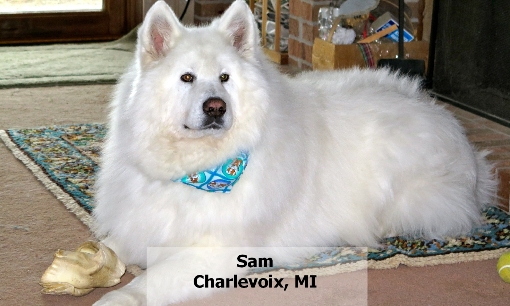Researchers in Brazil compared mycotoxin levels within multiple price ranges of dog food – from grocery store to premium types. They questioned “Are the cheap versions of pet food less safe to feed dogs if we look at presence of mycotoxins?”
The researchers tested dog foods for three common types of mycotoxins; fumonisin, zearalenone, and aflatoxin. The dog foods tested ranged from “Standard” – price range US$ 1-1.80/kg, to “Premium” – price range US$ 2-4/kg, to “Super Premium” dog foods – price range US$ 4.50-12 kg.
The results (graphic source: http://www.allaboutfeed.net/Mycotoxins/Articles/2017/10/Standard-or-premium-Which-dog-food-has-more-mycotoxins-197307E/):

The above graph shows that almost all of the pet foods tested positive for some type of mycotoxin; 49 dog food samples tested in the Standard category, 25 samples tested in the Premium category, 13 samples tested in the Super Premium category.
The graph below shows that the middle range – Premium level dog foods – tested lowest for levels of the 3 mycotoxins.

Information on the Brazil dog food study was obtained from AllAboutFeed.com.
What are mycotoxins?
From “Occurrence, Toxicity, and Analysis of Major Mycotoxins in Food”…
“Mycotoxins are toxic secondary metabolites produced by certain filamentous fungi (molds). These low molecular weight compounds are naturally occurring and practically unavoidable.”
The risk is not just from grains…
Many pet food consumers associate grains with the risk of mycotoxins, possibly leading them to ‘Grain-Free’ pet food choices. However, most grain-free pet foods include other starch ingredients such as peas that are just as susceptible to mycotoxins as grains. Another common mycotoxin not tested for in the Brazil study is common to peas (the grain-free pet food ingredient of choice) – “Ochratoxins have been found in a wide variety of agricultural commodities such as corn, wheat, barley, flour, coffee, rice, oats, rye, beans, peas, and mixed feeds, and are notably present in wine, grape juice, and dried vine fruits.”
Concerning risk to pets.
The Brazil study concluded “the estimated daily intake values were low, even for the Standard feed (low cost formulations)” of the dog foods they tested. “However, the paper states that it cannot be excluded that some of the pet food samples could have a negative effect on animal health and performance considering feeding a mono-diet of commercial feed, low multi-mycotoxin contamination levels and interactions between mycotoxins. Therefore, the researchers address that the risk assessment approaches for these mycotoxins in pet food should consider their possible synergic or additive effects.”
From the International Journal of Food Microbiology, Drs. Herman J. Boermans and Maxwell C.K. Leung published the report “Mycotoxins and the pet food industry: Toxicological evidence and risk assessment” in 2007. One of the biggest issues of concern discussed, is that existing studies of mycotoxin contamination in pet food overlook the day to day consumption of small amounts of mycotoxins; resulting in “chronic diseases such as liver and kidney fibrosis, infections resulting from immonosuppression and cancer.” While practicing veterinarians are familiar with severe mycotoxin contamination symptoms in pets, Drs. Boermans and Leung suggest chronic diseases are “often overlooked” as caused from long term consumption of lesser amounts of mycotoxins.
To read more excerpts from this report read ‘More than you ever wanted to know about mycotoxins‘ (published 2010).
What can consumers do? Easy to suggest, not so easy to accomplish.
The only way to eliminate the risk of mycotoxins in a pet food is to eliminate the potential mycotoxin contaminated ingredients (such as grains, dried pea ingredients). The difficulty is almost all kibble pet foods (cat food and dog food) contain grains or multiple dried pea ingredients (pea starch, pea fiber, pea protein), many canned pet foods contain the same.
Research shows that by adding some fresh food to the diet helps to decrease cancer risk (cancer is a confirmed risk of low levels of mycotoxins). Below is a video from Rodney Habib…
Consumers can as well question their pet food manufacturer. Ask how often the finished pet foods are tested for mycotoxins, and ask what mycotoxins they are testing for?
Wishing you and your pet(s) the best,
Susan Thixton
Pet Food Safety Advocate
Author Buyer Beware, Co-Author Dinner PAWsible
TruthaboutPetFood.com
Association for Truth in Pet Food
What’s in Your Pet’s Food?
Is your dog or cat eating risk ingredients? Chinese imports? Petsumer Report tells the ‘rest of the story’ on over 5,000 cat foods, dog foods, and pet treats. 30 Day Satisfaction Guarantee. Click Here to preview Petsumer Report. www.PetsumerReport.com

The 2017 List
Susan’s List of trusted pet foods. Click Here
Have you read Buyer Beware? Click Here
Cooking pet food made easy, Dinner PAWsible
Find Healthy Pet Foods in Your Area Click Here



































Patrick
October 18, 2017 at 4:42 pm
Mycotoxins are dangerous for kidney, liver, pancreas and litter (abortions, placental resorption). All pet foods with cereals have been tested positive for 2, or more, mycotoxins in France and other European countries.
Study about mycotoxins in France … in French (sorry) :
http://www.collie-online.com/colley/alimentation/index.php
Sherrie Ashenbremer
October 18, 2017 at 7:11 pm
I have never heard of Mycotoxins, sounds horrible.
Barb Hartman
October 19, 2017 at 11:49 am
So what green leafy vegetables do you recommend? Cooked or raw?
Susan Thixton
October 19, 2017 at 11:57 am
I give my own dogs (and even small amounts to my cats) broccoli, cauliflower, collard greens, squash…I cook the vegetables. And I vary it.